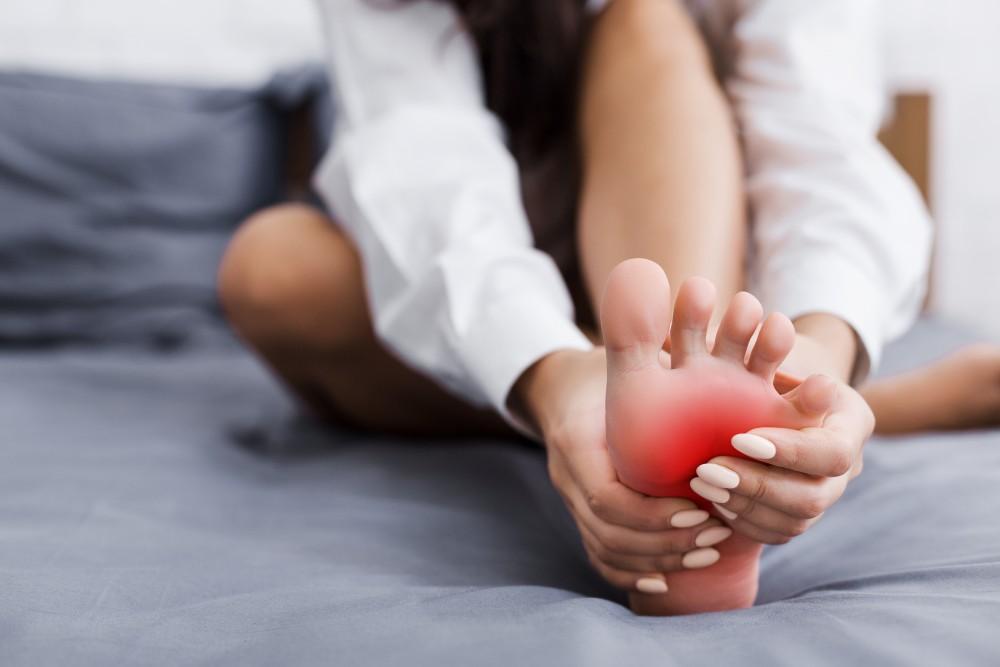
Did You Inherit Your Recurring Ingrown Toenail Problem?

For such a small, inconspicuous thing, an ingrown toenail can cause a world of pain, so much so that you can barely walk. Upon closer examination of your toe, however, you’ll likely notice an angry red in the area of your pain.
The extraordinary podiatry team at Premier Foot & Ankle, with nine convenient Texas locations, believes that the right diagnosis and treatment, delivered expediently, shortens your period of discomfort and gets you back into life again. It’s what we all want. Our practice also provides innovative treatments for many other foot and ankle conditions.
Why do ingrown toenails happen?
When your toenail’s growth spreads beyond the area of your nail bed, you’re suffering from an ingrown toenail. When your toenail grows at an angle rather than straight across, piercing the tender tissue right next to your nail bed, it doesn’t take long for you to feel serious pain. This is usually accompanied by swelling and that bright red tone we alluded to earlier.
Although there are many causes of ingrown toenails, such as failing to trim your nails straight across, toenail fungus, nail or toe trauma, or ill-fitting shoes, one that might surprise you is heredity.
You may wish you’d inherited your mother’s thick hair or your dad’s sense of humor, but few people are happy when their podiatrist tells them they have a predisposition for recurring ingrown toenails. Because chances are, they’re already quite familiar with the discomfort of the condition.
With regard to what we’ve all inherited from our parents — from eye color to temperament — this is an example of inheritance truly being a mixed bag.
Heredity and your toenails
Those who came before you influenced the toenails you see every day — your own. How? Genetics play a big role in how your toenails are shaped. People who have pincer toenails, or nails that are curled rather than flat and turn inward, are at greater risk for ingrown toenails because their nails more or less constantly dig into their skin.
The constant pressure on your toes and outside your nail area from these curled nails often causes a break in your skin, and this is where the pain and discomfort originate.
How can I tell if my ingrown toenail is at a dangerous stage?
The telltale signs of infection with an ingrown toenail are:
- Worsening pain and throbbing
- Burning at the site where your skin is red
- Nail discoloration
- Pus draining from your nail border
If you notice any of these signs with your ingrown toenail, seek treatment right away. If an infected ingrown toenail is allowed to worsen, the infection can enter your bloodstream through your broken skin.
This sets you up for a frightening, possibly deadly condition called sepsis, where your body’s reaction to an infection is extreme and it starts turning on itself, harming your own tissue and eventually your organs.
How can my ingrown toenail be treated successfully?
Fortunately, there are multiple treatments for ingrown toenails, as well as things you can do to prevent them. Prevention starts with:
- Trimming your nails straight across
- Not letting your nails get too long
- Wearing shoes that are roomy and comfortable
- Wearing footwear that protects your feet from injury
When you visit Premier Foot & Ankle, treatments for ingrown toenail pain and infection include taking oral antibiotics, using topical antibiotics, and using a toenail splint.
This is a small device that elevates your nail slightly and takes the pressure off the skin that has been compressed and possibly punctured by your nail. It allows healing to take place and can even improve how your nail grows out in some cases.
Removal of the portion of your nail that’s causing your pain can bring relief, as can complete removal of your toenail. This is known as matricectomy. Fortunately, you’re numb during the in-office procedure, and recover in a few days. Best of all, your ingrown toenail, and the pain associated with it, are gone.
Call the Premier Foot & Ankle office nearest you to make an appointment for ingrown toenail treatment or any other services we provide, or request one online today.
You Might Also Enjoy...


Lapiplasty: How 3D Bunion Correction Works

How to Get to the Root of Your Chronic Heel Pain

5 Ways to Care for Your Athletic Feet This Year

How to Keep Toenail Fungus From Spreading


